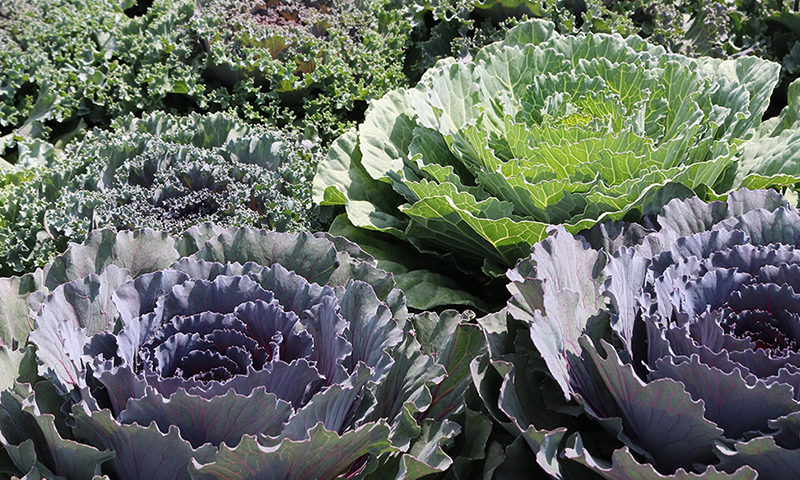Ornamental Cabbage and Kale

General Information: Due to their colorful foliage and persistence through the cooler, later months, ornamental cabbage and kale are two popular plants available in the fall. The distinguishing feature between the cabbage and kale are their leaves. Kale has curly, frilly edges and cabbage has broader, flatter leaves. They do flower, but the flower is insignificant since people grow ornamental cabbage and kale for their colorful foliage. The plants are made up of rosettes of leaves often a foot across and in colors of red, white, pink, light green and mixed. As night temperatures drop, the colors in the leaves intensify.
Light and Water: These biennials, grown as annuals, prefer full sun and rich, organic soil. Compost, leaf mold, or well- rotted manure are welcome soil additives. Plants should be set out approximately 12-14” apart and the soil should be kept moist, especially during dry periods. As our Summers can be both long and dry, special care should be taken not to forget the watering needs of these otherwise tough plants.
Fertilize: A general purpose fertilizer, such as granular 10-10-10, or water soluble 20-20-20, is recommended. When planting, work in a root stimulant and starter fertilizer. Thereafter, fertilize once every three weeks.
Maintenance: It is recommended to select plants that have short stems. As the lower leaves begin to fade, remove them. Although these plants may not be as tasty to humans as their vegetable cousins, insects such as cabbage worms, cabbage loopers, and aphids find them very tasty. BT, a bacteria that infects the insect but is not harmful to people or animals, may be used. Insecticidal soap or Malathion can be applied regularly at 7-10 day intervals. Both chemicals wash off, so re-apply immediately after it rains.
Landscape Use: Ornamental cabbage and kale are most effective used as a front border. They can also be used in window boxes, and mass planted in containers. It is not unusual to see these ornamental plants thriving in the Susquehanna Valley beyond Thanksgiving or Christmas. They may survive at least three hard freezes.
